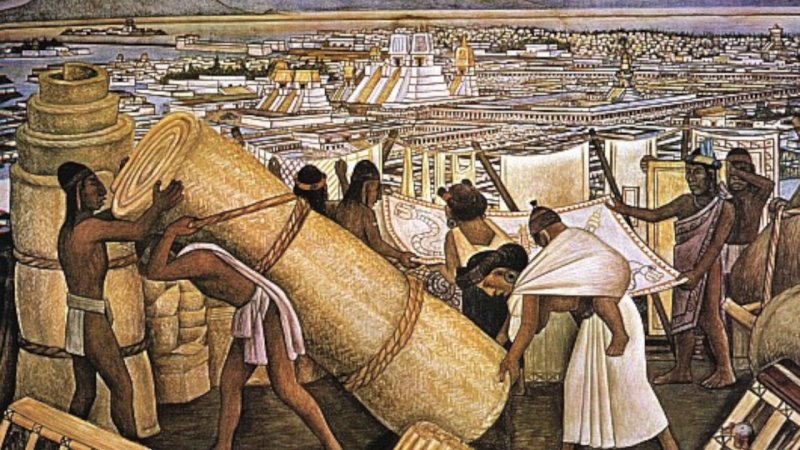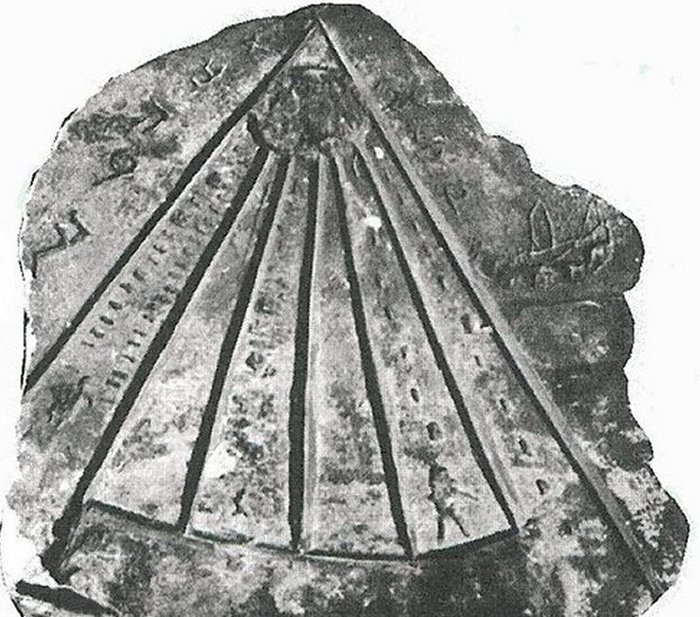Mysterious Sherbrooke Stones – Did Africans Visit North America 2,500 Years Ago?
Ellen Lloyd - AncientPages.com - In the Museum of the Seminary of Sherbrooke in Quebec, Canada there are two very interesting stones that tell an intriguing story about North America’s distant past.
According to the inscriptions on the stones, people from Africa visited North America 2,500 years ago. The stones have been in the museum since at least 1910, but they were discovered much earlier.
Did people from Africa visit America in the distant past?
The two flat stone pieces of limestone are three feet long and one and a half feet high and weigh around four hundred pounds. They were discovered in a field near the St Francois River by M. Ludger Soucy sometime early in this century.
Ancient Visitors From North Africa In America?
At the time of the discovery the considerably weathered stones were covered with two lines of unknown script.
Professor Thomas Lee, a Laval University archaeologist deciphered the inscriptions. According to Professor Lee the Egyptian inscriptions were written in a Libyan script. “The Libyans would have been operating, in my opinion, out of Carthage, which was a Phoenician city at the time", Professor Lee said.
He added saying the inscriptions suggest an ancient expedition reached the area after sailing up the St. Francis River, which flows into the St. Lawrence River, southwest of Trois-Rivieres, Quebec.
The inscriptions are written in a format called Boustrophedon, in which "you read the first line left to right and the next line right to left."
It is unknown how many ancient civilizations visited North America before the arrival of Columbus.
Professor Howard Fell of the department of comparative zoology at Harvard University believed that the message was in Libyan from North Africa “Thus far, our expedition traveled in the service of Lord Hiram, to conquer land. This is the record of Hanta, attained the great river. And these words cut in stone.”
One inscription on the stone reads - "Expedition that crossed in the service of Lord Hiram to conquer territory."
The other of the pair discovered together bears the inscription: "Record by Hata, who attained this limit on the river, moored his ship and engraved this rock."
Professor Fell also said that he believes that "barabarous lands at the end of the world" referred to in similar inscriptions in Spain definitely describe the Americas. He said evidence supporting an earlier discovery of the Americas than that of the Vikings has also been found in Spain and North Africa.
In his opinion, the people who left the stones made "at least two" expeditions, including one to the Yucatan area of Mexico. One stone found there "gives the area its name", he said.
Davenport And Pontotoc Stele Reveal Ancient Egyptians And Africans Visited America
Ancient history of North America is still shrouded in mystery. Historians, archaeologists, and other scientists keep debating who really discovered North America and we have many reasons and plenty of evidence to say Christopher Columbus was by no means the first foreigner who discovered the continent.
Some scholars have suggested ancient Egyptians and Africans visited America long before Columbus. The controversial Davenport and Pontotoc stele are two artifacts that may prove the presence of ancient Egyptians and Africans in America. Some researchers think the Davenport and Pontotoc stele are fakes, but there are also scientists who think such controversial artifacts deserve more study.
According to Professor Fell, the Davenport Stele contains a “trilingual text” in the Egyptian, Iberian-Punic, and Libyan languages. “This stele, long condemned as a meaningless forgery, is in fact one of the most important steles ever discovered,” wrote Professor Fell in his book America B. C. – Ancient Settlers in the New World.
Professor Fell surmised that the Davenport Stele dates back to the Twenty-second, or Libyan, Dynasty of the Egyptian empire, “a period of overseas exploration.”
On one side of the artifact, there are carvings of Egyptian writing and the festival. On the other side there is a picture of two Egyptian obelisks, a pyramid, and African animals. The Pontotoc Stele is considered to be the work of an early Iberian colonist in America, as the script is known otherwise from the Cachao-da-Rapa region in northern Portugal. It depicts the life-giving rays of the sun descending upon the earth beneath.
If we can imagine that Viking visited America in ancient times, why should Phoenicians, Libyans, Egyptians or other sailing cultures do the same?
Written by Ellen Lloyd – AncientPages.com
Copyright © AncientPages.com All rights reserved. This material may not be published, broadcast, rewritten or redistributed in whole or part without the express written permission of AncientPages.com
More From Ancient Pages
-
 Empusa – Shape-Shifting Evil Female Demon In Greek Myth And Folklore
Featured Stories | Jun 3, 2020
Empusa – Shape-Shifting Evil Female Demon In Greek Myth And Folklore
Featured Stories | Jun 3, 2020 -
 Shipboard Cannon Found On The Swedish West Coast May Be Europe’s Oldest!
Archaeology | Sep 12, 2023
Shipboard Cannon Found On The Swedish West Coast May Be Europe’s Oldest!
Archaeology | Sep 12, 2023 -
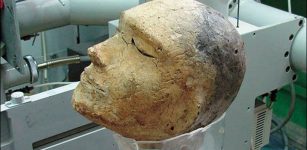 Mystery Of Unique 2,100-Year-Old Human Clay Head With A Ram’s Skull Inside
Archaeology | Apr 18, 2020
Mystery Of Unique 2,100-Year-Old Human Clay Head With A Ram’s Skull Inside
Archaeology | Apr 18, 2020 -
 Unexplained Lights Over English City Reported By Police May Have A Deeper Meaning
Featured Stories | Dec 11, 2019
Unexplained Lights Over English City Reported By Police May Have A Deeper Meaning
Featured Stories | Dec 11, 2019 -
 10 Ancient Celtic Symbols Explained
Ancient Symbols | Sep 9, 2023
10 Ancient Celtic Symbols Explained
Ancient Symbols | Sep 9, 2023 -
 The Norimitsu Odachi – Giant Japanese Sword Remains An Enigma
Artifacts | Mar 22, 2019
The Norimitsu Odachi – Giant Japanese Sword Remains An Enigma
Artifacts | Mar 22, 2019 -
 Rare 2,800-Year-Old Assyrian Scarab Amulet Found In Lower Galilee
Archaeology | Feb 24, 2024
Rare 2,800-Year-Old Assyrian Scarab Amulet Found In Lower Galilee
Archaeology | Feb 24, 2024 -
 Why Did Ancient Humans Have Same Sense Of Smell, But Different Sensitivities?
Archaeology | Jan 6, 2023
Why Did Ancient Humans Have Same Sense Of Smell, But Different Sensitivities?
Archaeology | Jan 6, 2023 -
 Raven Mocker And Cannibal Body Snatchers In Cherokee Mythology
Featured Stories | Jun 13, 2019
Raven Mocker And Cannibal Body Snatchers In Cherokee Mythology
Featured Stories | Jun 13, 2019 -
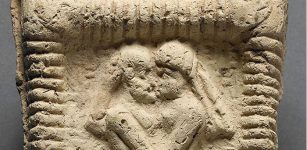 Humanity’s Earliest Recorded Kiss Occurred In Mesopotamia 4,500 Years Ago – New Study
Archaeology | May 18, 2023
Humanity’s Earliest Recorded Kiss Occurred In Mesopotamia 4,500 Years Ago – New Study
Archaeology | May 18, 2023 -
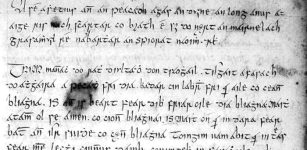 Is This The World’s Oldest Joke?
Featured Stories | Feb 21, 2014
Is This The World’s Oldest Joke?
Featured Stories | Feb 21, 2014 -
 Huge 7,000-Year-Old Man-Made Structures Used For Religious Rituals Spotted In Poland
Archaeology | Nov 30, 2019
Huge 7,000-Year-Old Man-Made Structures Used For Religious Rituals Spotted In Poland
Archaeology | Nov 30, 2019 -
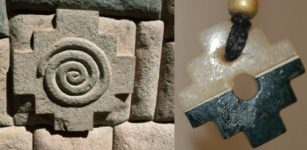 Mysterious Chakana – Sacred Inca Cross And Its Connection To The Southern Cross Constellation
Ancient Symbols | Sep 15, 2018
Mysterious Chakana – Sacred Inca Cross And Its Connection To The Southern Cross Constellation
Ancient Symbols | Sep 15, 2018 -
 How The Kimono Became A Symbol Of Oppression In Some Parts Of Asia
Featured Stories | Sep 17, 2022
How The Kimono Became A Symbol Of Oppression In Some Parts Of Asia
Featured Stories | Sep 17, 2022 -
 Zawgyi – Demi-God And Alchemist With Miraculous Powers In Burmese Mythology And Folklore
Featured Stories | Aug 17, 2021
Zawgyi – Demi-God And Alchemist With Miraculous Powers In Burmese Mythology And Folklore
Featured Stories | Aug 17, 2021 -
 Extraordinary Gold Pendant With Cross Re-Writes Anglo-Saxon History – It’s One Of The Oldest Symbols Of Christianity Ever Found In East Anglia
Archaeology | Dec 11, 2017
Extraordinary Gold Pendant With Cross Re-Writes Anglo-Saxon History – It’s One Of The Oldest Symbols Of Christianity Ever Found In East Anglia
Archaeology | Dec 11, 2017 -
 Mysterious Green Light And Ancient Treasures – Cave Of The Gods And Its Secrets
Featured Stories | Jul 3, 2018
Mysterious Green Light And Ancient Treasures – Cave Of The Gods And Its Secrets
Featured Stories | Jul 3, 2018 -
 Large Mammoth Tusk And Bones Buried For Thousands Of Years Found In North Dakota
News | Jan 8, 2024
Large Mammoth Tusk And Bones Buried For Thousands Of Years Found In North Dakota
News | Jan 8, 2024 -
 A 200-Year-Old Swedish Mystery Remains Unsolved
Featured Stories | Oct 7, 2015
A 200-Year-Old Swedish Mystery Remains Unsolved
Featured Stories | Oct 7, 2015 -
 How The Great Sphinx Gave Thutmose IV Power To Become Pharaoh
Civilizations | Jul 19, 2021
How The Great Sphinx Gave Thutmose IV Power To Become Pharaoh
Civilizations | Jul 19, 2021


